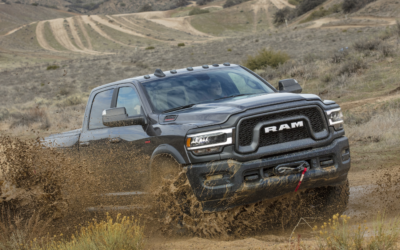The Road to Compliance Using ELDs
The rules and regulations regarding electronic logging devices (ELDs) have been years in the making. The impact of ELDs on compliance has been instantaneous. It is basically an electronic method of data collection that provides checks and balances in the fleet industry. Previously, the duty status and hours of service records were logged through paperwork. Paper-based logs have always been a main part of the fleet industry, but the advent of ELDs promises a big change for the industry, as it moves forward.
A lot of smaller fleets in the industry, which only have fleet operations as a part of their overall business, have found the adoption of ELDs a bit of a challenge. For one, drivers’ acceptance was one of the initial challenges. For instance, the Hi-Lite Airfield Services LLC, a company that provides airfield maintenance across the country, found driver acceptance to be a major issue. While people constantly look for improvements in every aspect of life, accepting change is not the easiest thing to do even in this day and age.
The change was particularly challenging for the older drivers in the Hi-Lite Airfield Services LLC. This is because some of them still use flip phones – something people of this generation can deem to be an ancient relic. There were some drivers in the company who said that they would let their commercial drivers’ license expire and find another profession to work in.
Hi-Lite Airfield Services LLC did not encourage the drivers to turn in their CLDs because from the older drivers there were some that appreciated being able to head back home early. ELDs save a significant amount of time due to the decreased amount of paperwork they have to deal with.
Here is a look at how some of the smaller fleets can choose and implement the changes through electronic logging devices so that they are compliant with the current regulations.
Implementing ELDs Into Fleet
Toshiba’s approach to implementing ELDs into their fleet was well thought-out. They held several conference calls and webinars with the managers and drivers of their fleet in which they discussed everything there was about implementing the change. This was an ideal course of action leading up to the deadline. When the deadline did arrive, FleetUp sent instructions to all the employees along with technicians to setup the systems for them.
The implementation process saw Toshiba focus on ensuring that the tool was easy to use. Some drivers employed in Toshiba’s fleet started off with using the applications for their smartphones and moved on to mounted tablets, while others simply continued to use their smartphones for the ELDs.
This proactive approach towards implementation saw less than expected pushback from the drivers for Toshiba’s fleet. From a corporate perspective, Toshiba loved the change. It offered them more efficiency in their overall fleet processes because of the change and the drivers were also happy.
Choosing an ELD Provider
When Hi-Lite Airfield Services LLC was implementing the change, they formed an internal committee within the company that was tasked with helping them decide on the ELD provider.
The company’s internal committee did their research and short-listed 15 providers of ELD systems. The company narrowed it down to three companies in a month and a half before they finally decided on Gorilla Safety.
Hi-Lite Airfield Services LLC considered a lot of factors before deciding on Gorilla Safety. They wanted a reasonable price, a company which worked well with their duties of moving maintenance vehicles in airports and treated Hi-Lite Airfield Services as well as they would treat their bigger companies.
Choosing the right kind of ELD provider is essential for smaller fleets, especially when their operations are not of the generic fleet nature. For instance, Hi-Lite’s business needed the use of sophisticated hours of service record that the vendor had to fulfill for them. They required a system that would measure more than just the miles on the highway. Their trucks’ operation, while striping the airfield was also to be measured. While the yard moves would not normally count in generic fleet uses, it counted for a lot for this particular company.
Toshiba went with FleetUp because the company was able to form a good working relationship with the ELD provider. The fleet management platform FleetUp provided was a perfect match for Toshiba’s fleet needs and they were able to properly communicate all the needs of the company’s fleet.
Compliance Through Teamwork
The aspect of implementing the changes in compliance because of ELDs has not just been a learning curve for fleets. The inspectors authorized with enforcing the regulations are experiencing one of their own. It has been a bit of a challenge for drivers to put the system to practice on the road but the same can be said for the inspectors enforcing the regulations.
One instance saw a driver from Geotechnology’s fleet receive a warning from an inspector about not meeting the requirement of having seven blank paper logs with him while operating his vehicle. The driver had to drive down to pick up the new forms. Now, there are more seminars being conducted to offer officers from the Department of Transport the necessary training.
This shows that work needs to be done by both the operators of fleets and the Department of Transportation officers. They need to accept the fact that change will be benefit the industry as a whole and practice patience as everybody gets used to the way things will work from now on.
ELD regulations were implemented to mitigate any and all gray areas which allowed drivers to work more hours than they should so that they are at a lower risk of getting into accidents. To that end, ELDs have already started to show their impact though the elimination of gray areas. ELDs make it all black and white. With enforcement officers and the fleet operators working together, the future of the industry can be a much safer one.






